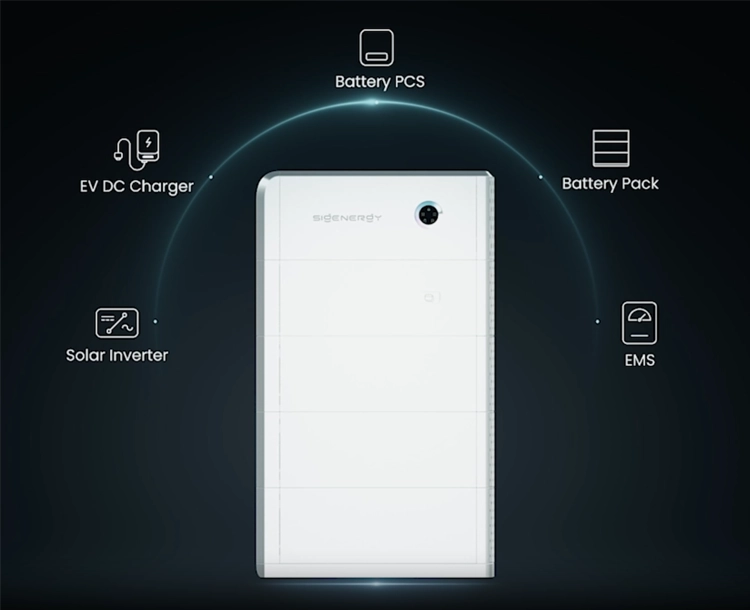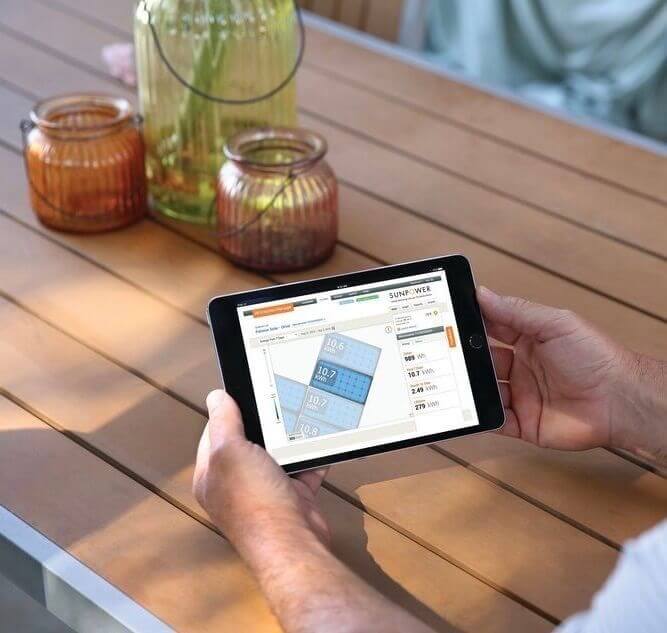Feed-In Tariff For Solar
- Logan Haggerston
If you are considering installing solar panels, then you’ll probably have heard of something called a “feed-in tariff”, or FiT for short.
But, what exactly are feed-in tariff schemes? In order to get the best value from your solar energy, it’s essential to understand the precise function of a FiT. This article will explain everything you need to know about this tariff and why it could be so beneficial to you, your home, and the environment.
What Is a Solar Feed-In Tariff?
Over 40 countries have feed-in tariffs creating renewable energy and over the past few years are considered an increasingly effective way to increase solar energy uptake.
Simply put, a feed-in tariff scheme refers to the amount of money/credits per kilowatt-hour you receive based on how much electricity you put back into the electricity grid.
How much you can earn from this per kilowatt-hour depends on a variety of factors, such as:
- Your electricity supplier
- Where you live, i.e. state/territory
The type of solar power system you have.

How Do Solar Feed-In Tariffs Work?
Feed-in tariffs work by allowing people who produce additional solar energy to earn money from it by having the surplus power fed back into the grid. It’s that simple.
The 2 Types Of Solar Feed-in Tariffs
There are two types of solar FiTs that you should know about:
- Gross feed-in tariffs
- Net feed-in tariffs.
Both these tariffs work in slightly different ways, but each serves the same function of paying you for the electricity exported.
Gross feed-in tariff rates
With a gross feed-in tariff, the electricity provider will pay you for the electrical power your solar generates, which is put back into the grid. You are then charged for the electricity you use separately.
Net feed-in tariff rates
Net feed-in tariffs, on the other hand, only pay you for the excess electricity you produce after your property has used the amount of electricity required by it. If your solar panels do not produce enough, you will still be charged for the electricity used.
Who Is Eligible to Receive a Feed-in Tariff?
To be eligible for the feed-in tariff schemes, your solar system needs to be:
- In use on a household or business
- Connected to the grid within the National Energy Market (NEM).
Who Pays the Solar Feed-in Tariff?
Many think that the government pays the tariffs, but in fact, they only pay the rebate (we will discuss the difference between a feed-in tariff and a solar rebate a bit later on).
It is your electricity supplier who will reimburse you for the extra amount of electricity your home or business produces, and it’s a straightforward process. When your supplier receives the surplus electricity, and it is fed into the main electricity grid, they can sell this on to people to use.
There is a huge demand for electricity throughout Australia, so it’s not surprising that many electricity retailers are ready and waiting to offer minimum feed-in tariffs to solar customers. Terms and rates will vary between companies, so it’s a great idea to do your research before committing to a supplier, although you can switch suppliers at any time.
The Essential Services Commission sets the minimum feed-in tariff rate that electricity retailers can offer customers, meaning they must provide you with at least this sum. However, they are free to offer you above the minimum feed-in tariff.
When to Apply
Before you apply for a solar FiT rate, you must have already have installed a solar system. It’s important to remember that you will not automatically receive a feed-in tariff when you get these installed. You’ll be required to contact electricity suppliers and enquire about their eligibility requirements and what they offer.
Will the Government Pay for Solar Panels?
The government of New South Wales will pay for solar panels for all households and small businesses in NSW. This is excellent news to those that have already installed their own solar energy system. If you are beginning the process and need a hand from the federal government, you can still apply online to receive your subsidy payment via direct deposit.
Other disbursement options may also depend on eligibility guidelines such as BTB Guide Credits.
Do You Pay GST on Money Earned From Solar Feed-in Tariff?
Homeowners are not required to pay GST unless they go over the earning threshold of $75,000 per year. So, if you don’t make earnings over this figure on your solar, you will not have to spend out on GST.
It is, however, important to know that business and commercial properties will likely be required to settle GST.
When Will the Solar Feed-in Tariff End?
Feed-in tariffs are predicted to end on 31st December 2030. But, there is good news. As they are operated by energy companies and are not a government incentive, the likelihood that they will continue after 2030 is high.
What’s the Difference Between a Solar Feed-in Tariff and Solar Rebate?
It can be difficult to understand the difference between solar rebates and feed-in tariffs at first.
Solar rebates encourage homeowners or businesses to install solar systems by offering monthly payments. In many cases, these payments can cover up to 30% of the total solar installation cost.
However, a feed-in tariff is a programme where you can receive an upfront fee and ownership rights if you meet specific requirements, like an agreed-upon price per kilowatt-hour of energy produced.
Both are designed to reduce the country’s reliance on fossil fuels, such as gas and coal, and increase sustainability with cleaner electricity at cheaper rates.
Who Offers the Best Feed-in Tariffs?
There are various ways to ensure that solar customers receive the very best value for money on your FiT.
The most popular way to ensure you get the best deal is to use price comparison websites to compare energy companies. Many electricity retailers will go above the minimum feed-in tariff rate, so always shop for the highest feed-in tariff rate you can get.
Various online price comparison tools will help you find the best match for you so you don’t have to settle for minimum feed-in tariffs.

FAQs
Below you will find a list of the most frequently asked questions when it comes to feed-in tariffs and solar energy:
Do feed-in tariffs change?
Yes, feed-in tariffs do change, and this is due to a variety of factors.
One of the main reasons they change is time; during peak hours, you will get paid higher than during off-peak times. This is because more people use and consume energy from the main grid during these hours.
How much electricity currently costs on the grid is another factor as to why the minimum feed-in tariff rate may change from time to time.
Any fluctuations in wholesale electricity prices can mean that energy companies are forced to adjust their customer’s tariff rates.
Is feed-in tariff income taxable?
There is a lot of confusion about whether or not a FiT is income taxable. The official rulings from The Australian Tax Office (ATO) are becoming more and more favourable towards the use of solar panels.
It all comes down to what your building is used for. If you are a homeowner who uses your property only for living in, you will not be required to pay tax on your feed-in tariff.
On the other hand, if your property is used for-profit purposes, then any earnings from FiTs are considered taxable income. For example, those who own commercial buildings are business owners or investors will likely have to pay tax on their feed-in tariff.
Why are solar feed-in tariffs so low?
As previously mentioned, solar generation is highest when the electricity demand is at its lowest during the day. The over-supply of solar energy during this time decreases the wholesale electricity price, enabling regulators to recommend minimum benchmark prices for feed-in tariffs.
Lorem ipsum dolor sit amet, consectetur adipiscing elit. Ut elit tellus, luctus nec ullamcorper mattis, pulvinar dapibus leo.
How much money can I save by using solar power?
Solar will potentially save you money on your electricity bill, although the exact figure can depend on a variety of factors, such as:
- Which of the current feed-in tariffs you decide on (Net Feed-In or Gross Feed-In)
- The size of your solar generation
- Wholesale electricity prices
- Your electricity plan
- Whether you are on a minimum feed-in tariff
- The amount of sun your solar system has throughout the day
- When you use electricity and how much of it you use.
Key Takeaways
- Feed-in tariffs (FiTs) incentivize solar energy production by compensating for electricity fed back into the grid.
- There are two types: gross FiTs pay for all solar-generated electricity, while net FiTs pay for surplus electricity after consumption.
- Eligibility requires a grid-connected system within the National Energy Market.
- Electricity suppliers, not the government, pay FiTs, with rates varying by supplier and region.
- Applying for FiTs requires an installed solar system and contacting electricity suppliers for their offers.
- The scheme aims to reduce reliance on fossil fuels and promote sustainable energy, with potential savings on electricity bills.
Get in Touch With HCB Solar
There’s no doubt that a feed-in tariff is a fantastic way to potentially cut down your electricity bills, which can lead to lower costs in the long term.
But that’s not all. Solar power is not just about saving money for an increasing number of homes and businesses. It’s an excellent way to add value to your property as well as minimise your carbon footprint.
Contact us today to learn more about how we at HCB Solar can help you benefit from installing a solar power system in your home or business today.





